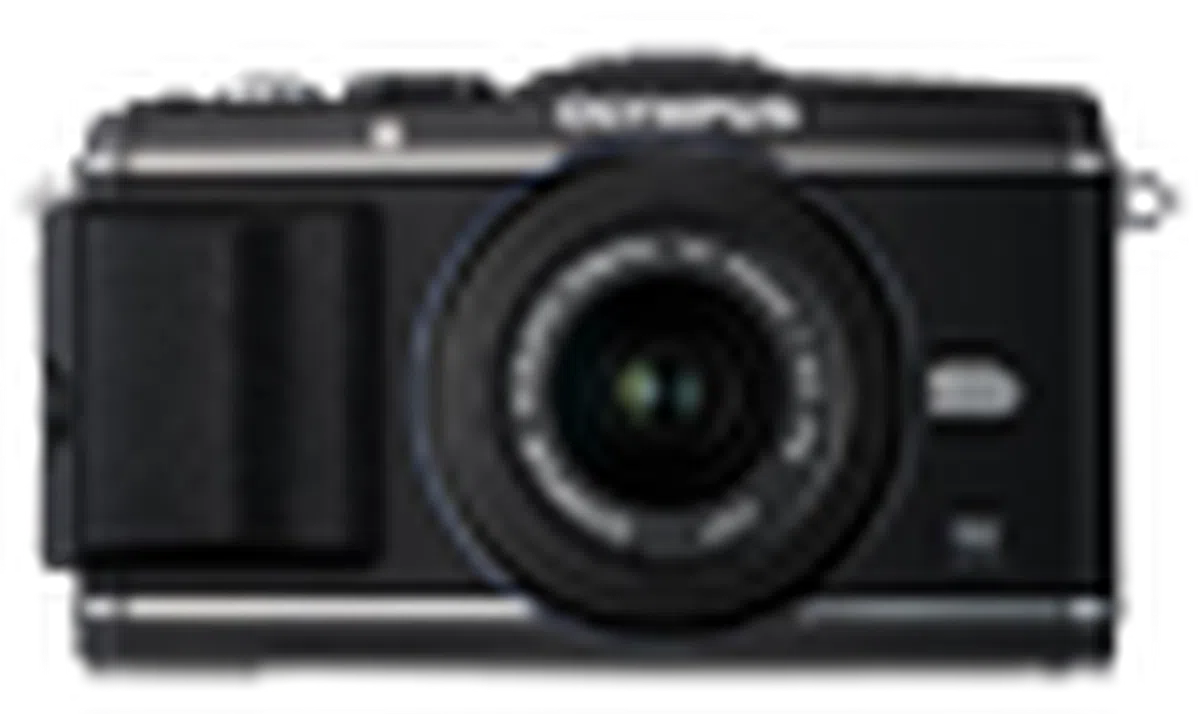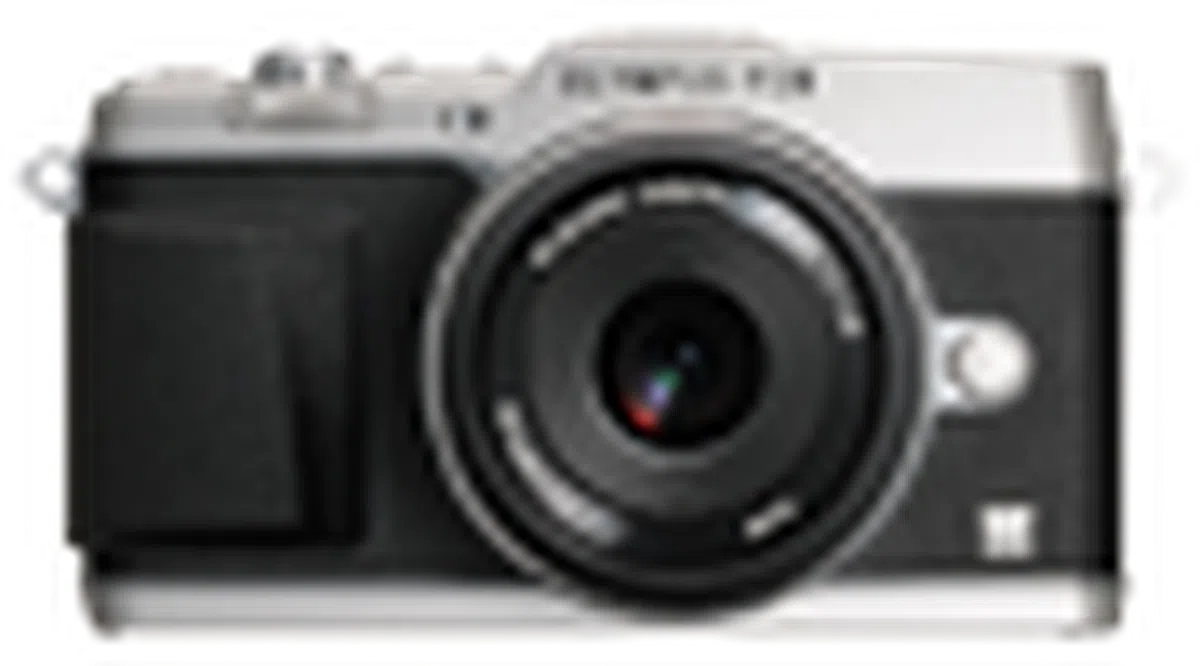Preview: Olympus Pen E-P5
Olympus' new mirrorless system camera, the Pen E-P5, packs a solid punch in specs alone. It gets the best from the groundbreaking OM-D E-M5, and even adds more like built-in Wi-Fi. Click through to see what else is new in our hands-on preview of this gorgeous camera.
By HardwareZone Team -

Introduction
There's a pattern to technology updates. If you introduce a groundbreaking high-end product like the Olympus OM-D E-M5, you'll usually follow up a few months later with a cheaper, lower-powered model. But not so with Olympus, which seems to be breaking all the rules.
First, they put the same, high quality 16MP sensor from the E-M5 into the entry-level Pen E-PL5. Now, they're taking the best from the flagship E-M5 and putting that into the new Olympus Pen E-P5. Not everything to be sure, it doesn't have the E-M5's weather-sealing, or a built-in electronic viewfinder. But it does have the same 16MP image sensor, 5-axis image stabilization, and in some ways is even better than Olympus' mirrorless flagship, throwing new features like Wi-Fi, focus peaking into the mix.
As a bonus, the E-P5 is also drop-dead gorgeous. Seriously, if you can't appreciate how great the E-P5 looks, you're probably dead inside.
The E-P5 is a Significant Reboot
The E-P5 represents a significant upgrade to 2011's E-P3 (yup, they skipped unlucky number 4), so much so that it's easier to think of it as a reboot than an update. There are now two control dials instead of one, and when you flip a back Function lever the two dials change functions - in effect, you get double the controls via a switch of the lever. Very clever.
The E-P5 can also shoot up to 1/8000th of a second, and ISO can be expanded to ISO 100, which helps when you want to shoot wide open with fast glass in bright light. The built-in Wi-Fi pairs the E-P5 with an iOS or Android smartphone via the Olympus OI.Share app; you can shoot using your smartphone as a remote, transmit photos over, as well as tag them with GPS co-ordinates using the phone.
The E-M5's auto-focus is supposed to be even faster in the E-P5, and manual focusing will be even easier now thanks to the additional of focus peaking. The 3" touch-screen tilting LCD isn't OLED like the E-M5, but it's actually higher resolution with 1.04 million dots compared to 610k dots. Flash synchronization speed is higher at 1/320th of a second to the E-M5's 1/250th, even battery life is higher; the E-P5 can shoot up to 400 shots per charge compared to the E-M5's 360 shots.
Not Without Some Cost
All those goodies don't come without some costs. The E-P5 is nearly S$100 more expensive than the E-P3 at its launch, and that's just the E-P5's body alone price with no lens. During our meeting with Olympus, they said that enthusiasts aren't usually enthused with kit lenses, with which we have to agree. That's why they're selling the E-P5 at either body alone, or with the delicious 17mm f/1.8 prime lens and new VF4 electronic viewfinder...which actually costs S$100 more than the E-M5's pricier kit.
The E-P5 also gains a bit of weight, at 420g it's heavier than the E-P3 and just 5g shy of the E-M5. Check out more impressions of the E-P5's redesign and handling on the next page.
Pen E-P3 | Pen E-P5 | OM-D E-M5 | |
Megapixels | 12.3MP | 16MP | 16MP |
Image Engine | TruePic VI | TruePic VI | TruePic VI |
Image Stabilization | Built-in | 5-axis | 5-axis |
Electronic Viewfinder | Optional | Optional | Approx. 1.44m dots |
Monitor | 3" OLED with touch control, approx. 614k dots | 3" tilt with touch control, approx. 1037k dots | 3" tilt OLED with touch control, approx. 610k dots |
Shutter Speeds | 1/4000-60 sec., Bulb (up to 30 min.) | 1/8000-60 sec., Bulb (1-30 min. selectable) | 1/4000-60 sec., Bulb (1-30 min. selectable) |
Flash | Built-in, 1/180 sync speed | Built-in, 1/320 sec. sync speed, 1/250 sec. (external flash) | External flash (bundled), 1/250 sec. sync speed (depending on flash models) |
Fastest Shooting Speed | 3fps | 9fps | 9fps |
Highest Movie Resolutions | 1920 x 1080/60i, 20Mbps (Fine) | 1920 x 1080/30p, 20Mbps (Fine) | 1920 x 1080/30p, 20Mbps (Fine) |
Wi-Fi | N.A. | Built-in | N.A. |
Battery Life | Approx. 330 shots | Approx. 400 shots | Approx. 360 shots |
Dimensions | 122.0 x 69.1 x 34.3mm | 122.3 x 68.9 x 37.2mm | 121 x 89.6 x 41.9mm |
Weight (with Battery & Memory Card) | Approx.369g | Approx. 420g | Approx. 425g |
Retail Prices |
|
|
|

Design & Handling
Olympus says the Pen E-P5's new look is inspired by the classic Pen F, and we can certainly see the family resemblance. The company also has some rather bold words as to why this is the first Micro Four Thirds Pen model to actually have the word 'Pen' on the camera body (the rest just said 'Olympus'):
That logo is the crown of the Olympus Pen brand, symbolizing that this is the flagship model for which advances have been made that are only appropriate for this brand, and has provided new value as an innovation on cameras from the age of film.

Here's where we preface everything by telling you the E-P5 in our preview is a prototype model, and as such the final production model is still subject to change. Now, let's move on.
The first impression you'll get when you pick up the E-P5 is how dense it feels. The E-P5 is nearly 50g more than the E-P3, and feels heavy in the hands. The weight isn't cumbersome but it is substantial. The E-P5 is nearly the same weight as the E-M5, but that camera had a substantial thumb-rest, the E-P5 not so much.
But the E-P5's controls feel more luxurious than the E-M5's. One complaint we had with the latter camera was how cramped the controls were, but on the E-P5 the controls are well-spaced with room to breath. In fact, when compared with the preceding Pen E-P3, every control on the E-P5 feels much better. The Power button is gone, replaced by a better-feeling switch. The tall control dial, which we never really liked, has been replaced by two infinitely better control dials, one on the front of the camera and one on the back. Just like on the E-M5, you can now handle this little beauty like a DSLR camera...with a little extra twist.

The E-P5 sports proper twin control dials, heads above the tall cylinder control dial of the E-P3.
Olympus calls the new twin controls the "2x2 Dial Controls", because of the new Function lever on the back. By switching the lever from 1 to 2, you switch around the functions of the two control dials. For example, right now our E-P5's control dials are dictating shutter speed and aperture value in Manual mode. When we flip the Function lever, the dials now control ISO and white balance settings. It's clever and frees up the Function button for another value other than ISO and white balance.

Flip the Function lever and the twin control dials switch to another set of controls, giving you four controls for the price of two.
Now the Function lever and 2x2 Dial Controls aren't open to much customization. There are four 'modes' you can choose from within the menu, which lets you choose what happens when you flip the lever to point 1 or 2. The first two just flip around which dial, the front or back, takes which command, the third mode switches to movie recording immediately and the fourth changes AF mode. Our preview set didn't have it all working, so we'll need to get back to that. Suffice to say we love the new 2x2 control dials, which put settings right at your fingertips.
A paradox about the close similarities between the E-P5 and the E-M5 is how the E-P5 actually does some things better than the E-M5. Case in point, the 3" tilting monitor with touch-control. The screen is higher resolution than the E-M5's, with a resolution of 1 million dots compared to the E-M5's 610k dots. It makes a difference, the live preview is stunning.

The 3" tilting touch-screen is higher resolution than the E-M5 and previews look extra vivid.

The built-in flash's spring mechanism is surprisingly firm, so you won't be able to tilt it up for some faux-bounce flash.
One more thing the E-P5 does better than the E-M5 is that it actually comes with focus peaking, the E-M5 does not. Focus peaking helps to make manual focusing that much easier by highlighting the areas in focus, and should come in useful with the Micro Four Thirds manual lenses like the bright Voigtländers.

Focus peaking highlights the areas in focus, helping you achieve focus while focusing manually.
Sadly, something the E-P5 and the E-M5 have in common with are the awkwardly placed strap lugs, which get in the way of your shooting finger every time you want to press the shutter or rotate the front control dial. It's a disappointing misstep at the end of a series of great steps forward, and it's hard to imagine why the designers at Olympus missed this one, especially since the rest of the camera seems so well thought-out and cared over.
Before we end this preview, we want to mention once more the E-P5's implementation of auto-focus point selection, which is without doubt the best on the digital camera market today, barring DSLR full-frame cameras. To go into the AF point selection grid, you simply press left on the d-pad. To go back into Multi-AF mode, you simply bring the AF point outside of the grid. It's the fastest and most elegant way we've seen for you to get your focus point on the right subject, and Olympus deserves to get extra kudos for it once again.

Olympus has the best implementation of AF point selection we've seen on any mirrorless system camera yet.
Oh, and did we mention the camera is gorgeous? The Pen E-P5 is easily one of the most charismatic mirrorless system cameras on the market today, and one of the most beautiful digital cameras in recent memory. Like its namesake the Pen F, the Pen E-P5 feels like something you want to keep for a long, long time. Check in again for our complete review once we get our paws on a production unit.

What's that you're carrying? Oh nothing, just a work of art.
Our articles may contain affiliate links. If you buy through these links, we may earn a small commission.


